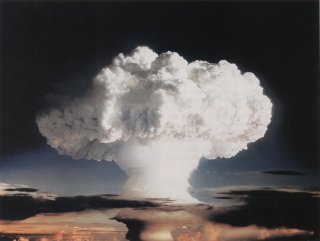The Evolving Missions of Technical Nuclear Forensics
First developed for nuclear test monitoring and treaty verification purposes during the Cold War, modern nuclear forensic capabilities are now used to determine the provenance of nuclear materials found outside of regulatory control, such as those seized from nuclear smugglers.
Finally, as U.S. adversaries continue to develop their nuclear doctrines, including consideration of clandestine or other non-traditional use contingencies, the United States must ensure that they do so mindful of U.S. capabilities to resolve unattributed nuclear events. This outcome can be achieved by expanding explicit references to nuclear forensics in U.S. declaratory policy to include the range of scenarios in which these capabilities may inform U.S. responses.
FROM THE dawn of the nuclear age, the policy debates surrounding nuclear deterrence, ballistic missiles defenses, and even commercial nuclear power have featured sharp ideological divides that persist to the present day. Nuclear forensics, by contrast, represents the rare nuclear capability that is untainted by partisanship and historical baggage. The non-ideological quality of the nuclear forensics mission should thus attract broad bipartisan support for enhancing the nation’s capabilities in this domain.
The relative inexpensiveness of America’s nuclear forensics programs further attests to their utility. Totaling less than $100 million across the U.S. government in 2019, investments in nuclear forensics represent a genuine bargain relative to their contributions to nuclear deterrence, conflict avoidance, and international nuclear safety and security. Yet, to appreciate fully the value of these capabilities one must consider the extraordinary economic impacts of a successful act of nuclear terrorism, which can hardly be overstated. Although preventing a terrorist nuclear attack is merely one of many scenarios to which forensic tools are germane, it is undoubtedly among the most consequential.
When one considers the shock of the September 11 attacks and the loss of life, as well as the economic, political, and military repercussions that lasted well over a decade, a terrorist nuclear attack would be orders of magnitude more destructive. Indeed, one widely cited Harvard University study estimated that a single 10-kiloton nuclear device detonated in New York City could kill as many as 500,000 people. The ramifications of such an attack are simply impossible to imagine. If America’s nuclear forensic capabilities were successful in deterring even a single terrorist nuclear attack, the return on investment would likely be without parallel in the history of national security expenditures.
Jay A. Tilden serves as Associate Administrator of the National Nuclear Security Administration’s (NNSA) Office of Counterterrorism and Counterproliferation, with responsibility for preparing for and responding to nuclear and radiological incidents worldwide. He previously served as Director of the NNSA Office of Nuclear Threat Science. Tilden is a career member of the Senior Executive Service.
Dallas Boyd is the Chief of Staff of the NNSA Office of Counterterrorism and Counterproliferation. From 2017–2018, he served as Director for Countering Nuclear Terrorism on the National Security Council staff. Boyd’s writings have appeared in the Nonproliferation Review, Bulletin of the Atomic Scientists, Strategic Studies Quarterly, Studies in Conflict & Terrorism, Washington Quarterly, and Homeland Security Affairs.
Image: Flickr / The Official CTBTO Photostream

